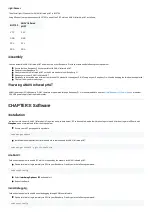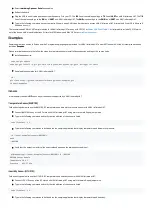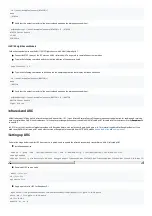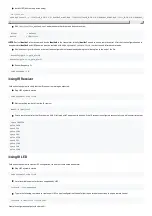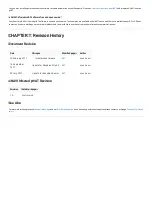
ANAVI Infrared pHAT
ANAVI Infrared pHAT
Convert Your Raspberry Pi to Powerful Remote Control
Convert Your Raspberry Pi to Powerful Remote Control
DISCLAIMER
DISCLAIMER
Raspberry Pi and the Raspberry Pi logo are registered trademarks of the Raspberry Pi Foundation. ANAVI, the ANAVI logo and combinations thereof, are registered
trademarks of Leon Anavi. Other product names may be trademarks of others and the rights belong to their respective owners.
The information in this document is provided in connection with Anavi products. No license, express or implied or otherwise, to any intellectual property right is
granted by this document or in connection with the sale of Anavi products.
This work is licensed under the Creative Commons Attribution-ShareAlike 3.0 Unported License. To view a copy of this license, visit
http://www.creativecommons.org/licenses/by-sa/3.0/.
ANAVI Infrared pHAT hardware design is licensed under a Creative Commons Attribution-ShareAlike 3.0 Unported License.
The software examples are released under MIT and the rest of the software is available under GPLv3.
It is possible that the pictures in this manual differ from the latest revision of the board.
The product described in this document is subject to continuous development and improvements. All particulars of the product and its use contained in this
document are given by Anavi in good faith. However all warranties implied or expressed including but not limited to implied warranties of merchantability or fitness for
purpose are excluded. This document is intended only to assist the reader in the use of the product. Anavi shall not be liable for any loss or damage arising from the
use of any information in this document or any error or omission in such information or any incorrect use of the product.
This evaluation board/kit is intended for use for engineering development, demonstration, or evaluation purposes only and is not considered by Anavi to be a finished
end-product fit for general consumer use. People handling the product must have electronics training and observe good engineering practice standards. As such, the
goods being provided are not intended to be complete in terms of required design-, marketing-, and/or manufacturing-related protective considerations, including
product safety and environmental measures typically found in end products that incorporate such semiconductor components or circuit boards.
There is no warranty for the design materials and the components used to create ANAVI Infrared pHAT. They are considered suitable only for ANAVI Infrared pHAT.
CHAPTER 1: Overview
CHAPTER 1: Overview
Introduction
Introduction
ANAVI Infrared pHAT is an open source hardware Raspberry Pi add-on board with IR receiver, transmitter, UART and 3 I2C slots for sensors. ANAVI Infrared pHAT was
started as a hobby project by Leon Anavi in January 2017. The project allows you to convert your Raspberry Pi into a smart remote control using the open source
software LIRC.
ANAVI Infrared pHAT is designed with the free and open source electronics design automation suite
. No soldering is required. You can assemble ANAVI
Infrared pHAT to your Raspberry Pi with your bare hands.
Anavi is fully compatible with the Raspbian GNU/Linux distribution and open source sample applications are provided.
Features
Features
ANAVI Infrared pHAT Raspberry Pi HAT includes:
IR LED
IR photo sensor
Slots for up to 3 plug and play I2C sensors
Supported Raspberry Pi Versions and Models
Supported Raspberry Pi Versions and Models
ANAVI Infrared pHAT is compatible with the following Raspberry Pi versions and models:
Raspberry Pi 4 Model B
Raspberry Pi 3 Model B
Raspberry Pi 2 Model B
Raspberry Pi 0
Raspberry Pi 0 W
Raspberry Pi Model B+
Raspberry Pi Model A+
ANAVI Infrared pHAT is NOT
NOT compatible with the earlier 26-pin models of Raspberry Pi 1 Model B & A's.
Target Market
Target Market
ANAVI Infrared pHAT is a Raspberry Pi HAT suitable for existing Raspberry Pi customers interested in home automation, software development and Internet of Things.
The board is appropriate for embedded programming enthusiasts, GNU/Linux gadget fans, students as well as web and/or mobile app developers. The main usage of
the board is embedded software development and controlling IR devices without the urge of understanding perfectly the hardware.



